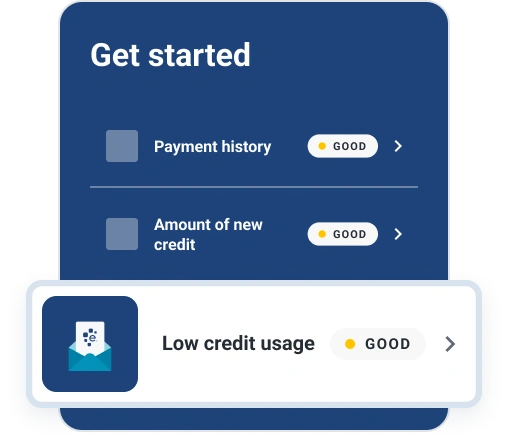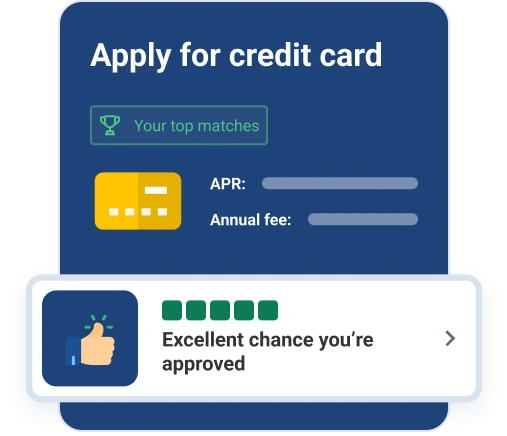At Experian, one of our priorities is consumer credit and finance education. This post may contain links and references to one or more of our partners, but we provide an objective view to help you make the best decisions. For more information, see our Editorial Policy.
As rising interest rates push credit card annual percentage rates (APRs) higher, carrying a balance on your credit cards is getting more expensive. Whether you're dealing with high-interest credit card debt or planning to make a big purchase, a credit card with an introductory 0% APR can help. With an intro 0% APR credit card, you pay no interest on purchases, balance transfers or both for a specified period of time―generally 12 to 21 months. Is an intro 0% APR card right for you? Here's what to know before you decide.
1. The Intro Period Only Applies to Some Transactions
Typically, the introductory 0% APR applies to balance transfers, purchases or both—but not to cash advances. Read the terms of the credit card carefully to make sure you understand what type of transaction qualifies for the promotional 0% APR. If the card offers an intro 0% APR on purchases, purchases made with the card won't accrue interest until the promotional period ends.
Balance transfer cards allow you to move a balance from another credit card to your new intro 0% APR card. As long as you make your minimum monthly payments and pay off the transferred balance before the promotional period ends, it won't accrue any new interest. Just keep in mind that you'll likely have to pay a balance transfer fee of 3% to 5% (more on that later).
Save with 0% intro APR credit cards
2. The Intro 0% APR Only Lasts a Certain Time
Nothing lasts forever, including introductory 0% APRs. The intro or promotional period lasts a certain number of months or billing cycles after you open the account. By law, the promotional APR must last at least six months, but can go longer. Common promotional periods are 12, 15, 18 and 21 months. A card's promotional period may also differ based on the type of transaction. For instance, some cards may offer a longer intro 0% APR period for balance transfers and a shorter one for purchases.
3. There's a Deadline for Completing a Balance Transfer
To receive the promotional 0% APR on a balance transfer, you'll usually need to request or complete the transfer within a specific time frame. You might have 60 days after opening your account to transfer a balance, for instance.
Requesting and completing a transfer are not the same thing. It can take up to 21 days to complete a transfer. Check the language of your cardholder agreement to ensure you don't miss the deadline. Continue making payments on your old card while the transfer is processed to avoid a missed payment.
4. There Might Be a Balance Transfer Fee
Credit cards often charge a balance transfer fee, typically 3% to 5% of the amount you transfer. To determine if a balance transfer makes financial sense, compare the balance transfer fee to the potential savings on interest. Usually, the tradeoff is worthwhile. However, if you're planning to transfer a large balance, a card with a 5% balance transfer fee will reduce your savings. Look for a card with no balance transfer fee, or a 3% balance transfer fee, to keep more money in your pocket.
5. You Can't Always Transfer Your Full Balance
When you're approved for a credit card, the card issuer will set a credit limit. The most you can transfer to the new card is the amount of your credit limit minus any balance transfer fees. For example, if your card has a credit limit of $3,000 and a 3% balance transfer fee, the most you'll be able to transfer is $2,910.
6. You Generally Need Good to Excellent Credit
Most intro 0% APR credit cards require good to excellent credit. A FICO® Score☉ Θ of 670 to 739 is considered good; a FICO® Score in the 740 to 799 range is considered very good; and a FICO® Score of 800 to 850 is considered exceptional. A higher credit score can qualify you for a higher credit limit, giving you more flexibility to transfer large balances to your new card. Your income, debt load and other credit card limits are also factors in whether you're given a high or low credit limit.
7. Remaining Balances Will Incur Interest
Once the promotional 0% APR period for balance transfers and/or purchases ends, any remaining balance on your credit card will begin to accrue interest at the card's standard APR. Planning carefully to pay down your promotional 0% APR balance before the introductory period is over will help you avoid ending up with an outstanding balance.
8. You Could Incur Deferred Interest
Deferred interest credit cards don't charge interest during the promotional period. However, if you have a balance when the introductory period ends, all of the interest that would have accrued during the promotional period will be added to your balance. Depending on the original balance, this could be a high price to pay. Although deferred interest is most commonly a feature of store credit cards, you should check the intro 0% APR card's terms to make sure it doesn't apply.
9. There May Be a High APR After the Promotional Period
When your promotional 0% APR ends, you'll be charged a standard APR going forward. Your credit card agreement will specify the standard APR. This may be stated as a range (for example, "17.99% to 27.99%, variable"), because you usually won't know the exact interest rate you qualify for until you're approved.
10. A Missed or Late Payment Could Wipe Out Your 0% APR
Some introductory 0% APR cards have a penalty APR. If you miss a payment or are even one day late with a payment, your 0% APR ends, and the penalty APR—which can be as high as 29.99%―applies going forward. Unless you bring your account current within 60 days, the card issuer can even apply the penalty APR to your existing balance. (Penalty fees for late payments may also apply.) Also keep in mind that 0% APR doesn't mean zero payments. Unless you have no balance, you must make at least the minimum payment on your card every month, or a higher penalty APR could kick in. Not all cards have a penalty APR; check the card's terms to find out.
How to Use Intro 0% APR Offers Wisely
An introductory 0% APR credit card can help you pay down credit card balances faster or finance a big purchase without adding interest to the cost. To make the most of your no-interest credit card, follow these steps.
- Create a repayment plan. Know how much you should pay each month to pay off your balance by the time the promotional 0% APR ends. You can simply divide your balance by the number of months in your promotional period to arrive at this figure. For example, if you have a $6,000 balance on a card with a 12-month promotional 0% APR, you'd pay $500 a month.
- Choose the card with the longest promotional period. A longer introductory 0% APR means more time to pay off your balance and smaller monthly payments, which is easier on your budget.
- Make at least the minimum monthly payment. Consider setting up automatic payments for the minimum monthly amount so you don't miss a payment and possibly lose your 0% APR.
- Stay within your budget. A 0% APR credit card―or a zero balance on your old credit card―could entice you to overspend. Ensure your promotional 0% APR card serves its purpose―saving money―by tucking it away if you don't intend to use it.
- Read the fine print. Before applying for a promotional 0% APR card, review the card's terms. What kinds of transactions qualify for the 0% APR, and when does the promotional period for each end? What happens if you miss a payment? Note any balance transfer fees, the time limit for making a transfer and any restrictions on transfer amounts. Also check for a penalty APR, penalty fee, any other fees and the standard APR that applies after the introductory period.
- Consider the impact on your credit. Opening a credit card account, using your card and transferring balances can all affect your credit scores. Applying for a new credit card can cause your score to drop slightly when the lender checks your credit using a hard inquiry. However, a new card can also boost your score by increasing your available credit, reducing your credit utilization ratio. Limiting the balance on your new card to 30% or less of the credit limit helps keep your overall credit utilization low.
- Leave your other credit card accounts open. After transferring balances to your new credit card, keep the old cards open, even if you don't plan to use them. Closing a credit card account shortens your credit history and reduces your available credit, both of which can negatively impact your credit score.
- Keep paying the bill on your old cards. Balance transfers can take up to 21 days to complete. Missing a payment on your old card before the balance is paid off could hurt your credit score. Wait until your old card has a zero balance to stop making payments.
The Bottom Line
Before applying for an introductory 0% APR credit card, check your credit score to see if you're likely to qualify. If your FICO® Score is low, you can help improve it by bringing late accounts current, paying your bills on time and paying down balances to reduce your credit utilization ratio. Use Experian's free comparison tool to search for introductory 0% APR cards that fit your credit profile.




